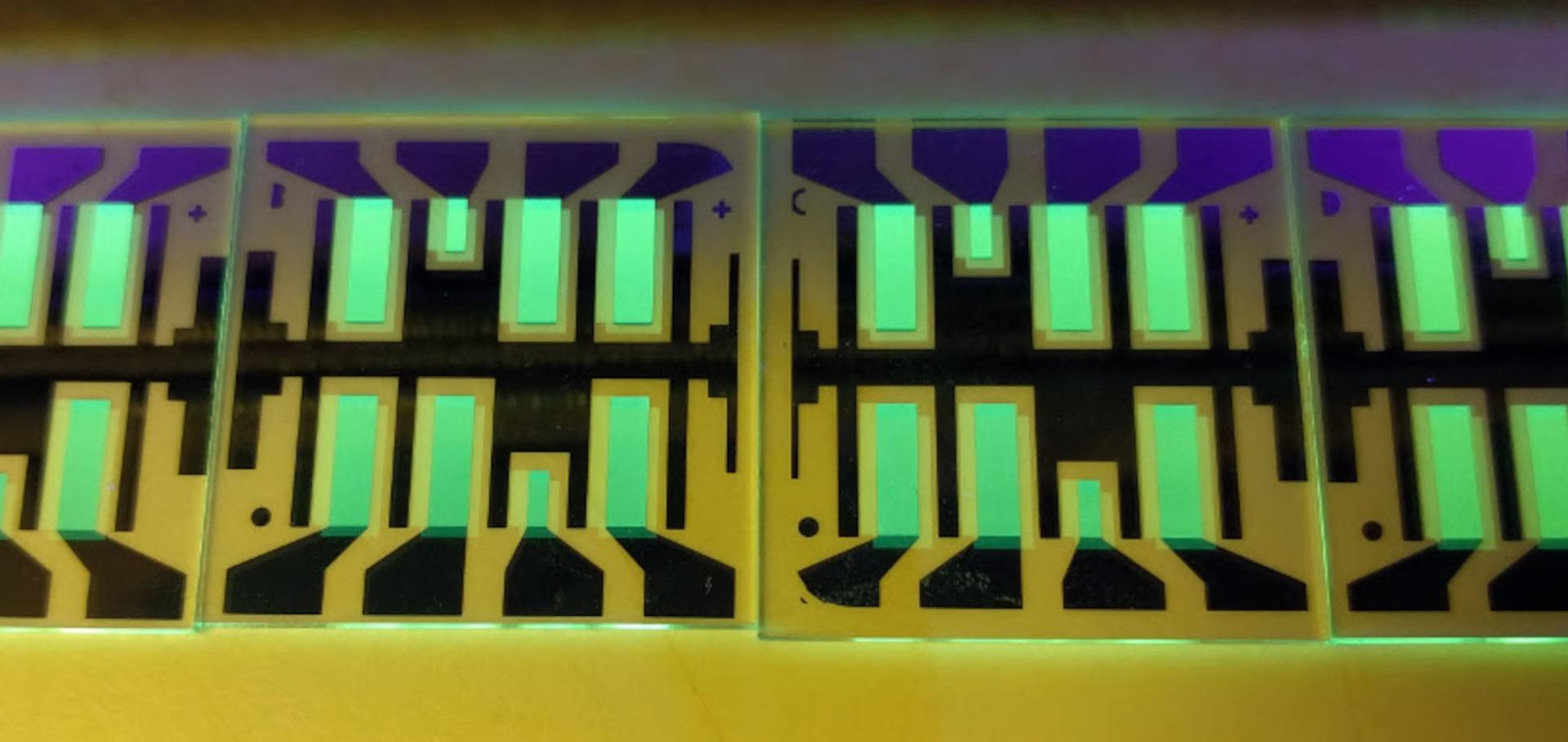Charge carrier mobility and ageing of ZnPc/C60 solar cells
Molecular Crystals and Liquid Crystals 522 (2010) 61/[361]-74/[374]
Abstract:
Cu and Zn Phtalocyanines (CuPc and ZnPc), and C60 are materials frequently used for organic Solar cell engineering. Their energy levels form a donor-acceptor junction, and they have high absorption coefficients and a complementary absorption for the Sun spectrum. We have investigated ageing properties of ZnPc/C60 Solar cells as they are influenced by the charge carrier mobility and variation of the potential barrier height of the ZnPc/C60 interface. The structures ITO/ZnPc/C60/C60:AOB/Al with a reasonable energy conversion efficiency of ∼1.5% were investigated. The samples were aged for 1300 hours upon illumination with blue LED, with peak emission at 475nm, and incident light power density of 10mW/cm2. The aged devices showed a strong and fast degradation of the short circuit current and of the fill factor after several hours followed by an almost constant behaviour of these values. The reference samples kept in the dark at the room temperature did show only very small changes in their I-V curves. Carrier mobility dependencies on electric field strength at different temperatures were measured by the Charge Extraction by Linearly Increasing Voltage (CELIV) method. It was demonstrated that mobility values decrease during degradation as compared to the reference samples. Nevertheless only mobility changes cannot explain the observed drop of device current. The increase of the effective barrier height at the interface of ZnPc and C60 by about 0.1eV from ∼0.55eV up to ∼0.65eV was observed in the aged samples. Meanwhile thermal activation energy values of the electrical conductivity grew from about 0.28eV prior to degradation up to about 0.34eV after ageing. © Taylor & Francis Group, LLC.Conductivity, charge carrier mobility and ageing of ZnPc/C60 solar cells
Optical Materials 32:12 (2010) 1676-1680
Abstract:
We have investigated conductivity and ageing of ZnPc/C60 solar cells as they are influenced by the charge carrier mobility and variation of the potential barrier height. The test structures with a reasonable energy conversion efficiency of ∼1.5% were investigated. The samples were aged for 1300 h upon illumination by the blue LED with peak emission at 475 nm. Upon ageing the devices showed a strong and fast degradation of the efficiency, short circuit current and of the fill factor within several hours followed by a much slower decrease of them. The reference samples kept in the dark at the room temperature did show only very small changes in their I-V curves. Carrier mobility dependencies on electric field strength at different temperatures were measured by the Charge Extraction by Linearly Increasing Voltage (CELIV) method. It was demonstrated that mobility values decrease during degradation as compared to the reference samples. Nevertheless only mobility changes cannot explain the observed drop of device current. The increase of the effective barrier height by about 0.1 eV from ∼0.55 eV up to ∼0.65 eV was observed in the aged samples. Meanwhile thermal activation energy values of the electrical conductivity grew from about 0.28 eV prior to degradation up to about 0.34 eV after ageing. © 2010 Elsevier B.V. All rights reserved.Light incoupling & optical optimisation of organic solar cells
Optical Nanostructures for Photovoltaics, PV 2010 (2010)
Abstract:
© Optical Society of America. Small-molecule organic solar cells (OSC) are developing towards maturity. For top-illuminated devices, device optimisation and tandem OSCs, interference effects, light trapping and thin film optics are decisive for optimal utilisation of the absorbing layers. We present transparent capping layers that allow for reduced external reflection and improved light incoupling when used in combination with thin metal top contacts. Similarly, transparent spacer layers are used in tandem devices to place the subcells at specific positions in the stack such as to utilise optical field maxima. The results are solar cells with high transparency in the visible region of the light spectrum and as well as world record tandem devices.On the communication of scientific data: The Full-Metadata Format
Computer Physics Communications 181:3 (2010) 651-662
Abstract:
In this paper, we introduce a scientific format for text-based data files, which facilitates storing and communicating tabular data sets. The so-called Full-Metadata Format builds on the widely used INI-standard and is based on four principles: readable self-documentation, flexible structure, fail-safe compatibility, and searchability. As a consequence, all metadata required to interpret the tabular data are stored in the same file, allowing for the automated generation of publication-ready tables and graphs and the semantic searchability of data file collections. The Full-Metadata Format is introduced on the basis of three comprehensive examples. The complete format and syntax are given in the appendix. © 2009 Elsevier B.V. All rights reserved.Improved photon harvesting by employing C70 in bulk heterojunction solar cells
Proceedings of SPIE - The International Society for Optical Engineering 7725 (2010)


